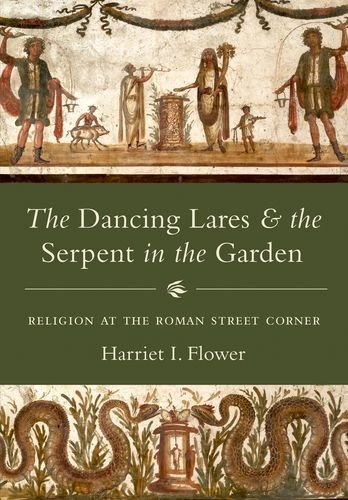

Most ebook files are in PDF format, so you can easily read them using various software such as Foxit Reader or directly on the Google Chrome browser.
Some ebook files are released by publishers in other formats such as .awz, .mobi, .epub, .fb2, etc. You may need to install specific software to read these formats on mobile/PC, such as Calibre.
Please read the tutorial at this link: https://ebookbell.com/faq
We offer FREE conversion to the popular formats you request; however, this may take some time. Therefore, right after payment, please email us, and we will try to provide the service as quickly as possible.
For some exceptional file formats or broken links (if any), please refrain from opening any disputes. Instead, email us first, and we will try to assist within a maximum of 6 hours.
EbookBell Team

4.7
66 reviewsThe most pervasive gods in ancient Rome had no traditional mythology attached to them, nor was their worship organized by elites. Throughout the Roman world, neighborhood street corners, farm boundaries, and household hearths featured small shrines to the beloved lares, a pair of cheerful little dancing gods. These shrines were maintained primarily by ordinary Romans, and often by slaves and freedmen, for whom the lares cult provided a unique public leadership role. In this comprehensive and richly illustrated book, the first to focus on the lares, Harriet Flower offers a strikingly original account of these gods and a new way of understanding the lived experience of everyday Roman religion.
Weaving together a wide range of evidence, Flower sets forth a new interpretation of the much-disputed nature of the lares. She makes the case that they are not spirits of the dead, as many have argued, but rather benevolent protectors―gods of place, especially the household and the neighborhood, and of travel. She examines the rituals honoring the lares, their cult sites, and their iconography, as well as the meaning of the snakes often depicted alongside lares in paintings of gardens. She also looks at Compitalia, a popular midwinter neighborhood festival in honor of the lares, and describes how its politics played a key role in Rome’s increasing violence in the 60s and 50s BC, as well as in the efforts of Augustus to reach out to ordinary people living in the city’s local neighborhoods.
A reconsideration of seemingly humble gods that were central to the religious world of the Romans, this is also the first major account of the full range of lares worship in the homes, neighborhoods, and temples of ancient Rome.